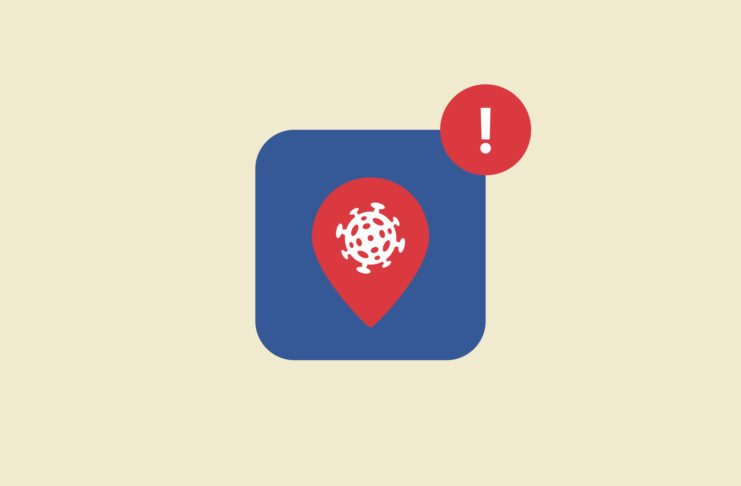Last month, Mark Zuckerberg confirmed in a testimony hearing that Instagram will become the latest social-media platform to build a kid-friendly version of its app. Following in the footsteps of Messenger Kids and YouTube Kids, Instagram for Kids is intended for children 13 or younger, an age group not currently allowed to use the Instagram app.
Facebook is still “early in (its) thinking” about how its Instagram for Kids app will work. But it will be led by someone experienced in this area: Its recent hire for vice president, Pavni Dijwanji, previously oversaw YouTube’s launch of its kid-friendly products. This comes as Instagram also announced its commitment to “continuing to make Instagram safer for (its) youngest members” on its platform.
[Keep up with the latest in privacy and security. Sign up for the ExpressVPN blog newsletter.]
This announcement was almost immediately met with skepticism from U.S. lawmakers, who in the past week pressed Facebook for more details about how exactly it intends to keep Instagram child-friendly.
The controversial history of kid-friendly social media
Instagram for Kids is not the first attempt by social media platforms to tailor its service to the pre-teen audience: YouTube Kids was released in 2015, and Messenger Kids in 2017.
Given these platforms’ notorious ability to track your online activity, the introduction of “child-friendly” apps is not only a privacy concern but also a legal one. Google was fined 170 million USD in 2019 by the Federal Trade Commission for tracking children’s viewing histories to target ads on YouTube, having violated the Children’s Online Privacy Protection Act (COPPA). In the same year, TikTok’s predecessor, Musical.ly, was also fined 5.7 million USD for violating COPPA in 2019.
In a different vein, Messenger Kids was hit by a critical bug in 2019, which allowed children to join groups with strangers and unauthorized users. The “technical error” was fixed quietly and, according to Facebook, did not affect many users.
Read more: 10 times Facebook violated your privacy
This doesn’t even include the non-privacy related controversies, the biggest of which occurred in 2017, when disturbing cartoon videos managed to pass content filters on YouTube Kids, racking up millions of views before being taken down.
All eyes are on Instagram’s next move
Love them or hate them, social-media platforms are a popular way to stay in touch with family and friends around the world, share photos and moments, and collaborate with others on pretty much anything.
So it comes as no surprise that Instagram’s announcement touted how its platform “can provide young people the opportunity to strengthen connections, practice social skills and find supportive communities.” While a noble idea, it does little to convince anyone of Instagram’s ability to protect children. As of writing, Instagram currently has no age-verification process to restrict access to its service in the first place.
The initial response to Facebook’s announcement of Instagram for Kids has been met with a chorus of disapproval from lawmakers, privacy advocates, and child development experts.
Lawmakers have given Facebook until April 26 to answer a series of questions and concerns surrounding how the company will handle the private data of their young users on Instagram, and to get Facebook to confirm that it won’t be targeting ads at children. “Facebook has an obligation to ensure that any new platforms or projects targeting children put those users’ welfare first, and we are skeptical that Facebook is prepared to fulfill this obligation,” the lawmakers wrote.
And this isn’t considering the long-term effects that social-media platforms like Instagram have on its users. The UK’s Royal Society for Public Health found in 2017 that Instagram was the worst social-media platform for young people’s mental health, and more studies have found it increases exposure to bullying and leads to less sleep and exercise.
It’s not clear what Instagram for Kids might look like, but if it’s anything like the original, it will likely come with the same issues.
Would you let your child use Instagram for Kids? Let us know in the comments.




























Comments
Absolutely not!! I would never subject my children to that Marxist, Communist, Propaganda !! That’s child abuse, social media should be shut down it is destroying our country from the inside out!!! And the MSM should be prosecuted to the full extent of the law for lying to the citizens and pushing their Marxist propaganda!!!
why not jus post PEDERASTS ENTER HERE …. #smh
NO WAY!!!! BIG TECH YOU KNOW WHERE YOU CAN TAKE YOUR CRAP AND IT’S NOT IN OUR HOME!!!!!
No way. There is no child safe version of social media.
As others have commented, there’s no way! Social media is THE reason this country is so messed up today. The hypocrisy by FB, Twitter & others is deafening. Banning President Trump & the NY Post’s story on Hunter Biden while allowing violent and avowed Marxists like BLM as well as promoting violence against our Nation’s Law Enforcement Officers like LeBron James & Maxine Waters did is unfathomable! All of social media should be permanently shut down.
Absolutely not… and I don’t even have kids! But one day, when I do, there is no way I will let them on a “kids’ social media” platform. Never mind what you think about the developer – kids don’t need social media; they need to be playing outside in the fresh air, using their imaginations! Take it from me, a girl who had no social media (or smartphone) until she was 18 and was all the happier for it.
I would not! I wouldnt let my kids or kids use the internet alone nevermind instagram. I had toy computers as a kid, think it was playschool brand. It just taught us basic elementary learning. When the time is right and they are mature enough to learn the internet under mine or my wife’s super vision.
Big Tech is a socialist/Marxist monopoly today. I would not allow my children access to any of the platforms. They cancel postings that would be good for today’s populace and support postings by people/countries that hate the United States and would see her conservative, family oriented and religious views removed (all of them if possible). No I do not support Big Tech in any of its social media formats. I am a proud supporter of Rumble and Parler. I wished there were more social platforms like them online today.
I would not let my kids use the Instagram for kids platform. I don’t like how the kids are being “indoctrinated” by our lousy schools and this another way to pre-program the kids that most parents object to, like me. I don’t like any of the social media platforms because they use the data they collect in a not always friendly or constructive way. These folks may have started with good intentions, although I doubt it, but now they are using their power in non-constructive even destructive ways.
ABSOLUTELY NOT!
A developing brain + manipulative, sneaky algorithms going on behind the scenes. Impossible…
Suicide rates will just continue to rise in the teen population, sadly.
Just watch ‘The Social Dilemma’ on Netflix.